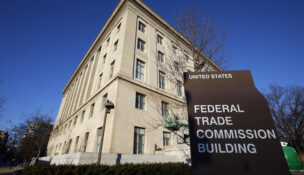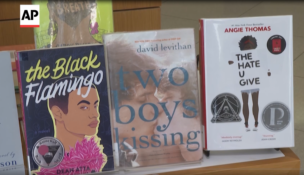The cost of campaigning
By: dmc-admin//March 12, 2007//
 |
|
Ziegler
|
According to the Wisconsin Democracy Campaign (WDC), the two hopefuls for the Wisconsin State Supreme Court, Annette K. Ziegler and Linda M. Clifford, could pump more than $1 million each into the race.
If so, that total would set a record for spending in a state judicial election. It also would exceed the previous record of $1.3 million spent in 1998 by current chief justice Shirley S. Abrahamson and opponent Sharren B. Rose.
The most recent financial reports, filed Feb. 5, showed Clifford and Ziegler had raised a combined total of $836,000.
Why is the Supreme Court campaign price tag estimated to be so high?
Because it should be, said John C. McAdams, political science professor at Marquette University.
A rare open seat on the Supreme Court has lasting political and judicial implications, so both candidates and outside interest groups are vigorously filtering funds into the campaign kitty.
“As long as judges act like super-legislators, these races should be fought out hammer and tongs before the voting public in a very visible manner,” said McAdams. “I think it’s perfectly acceptable, the dollars that are going to be spent on this campaign.”
Raising the Stakes
Viewed as a potential “swing seat” on the Supreme Court, outside interest in the outcome is more prevalent than ever.
With no incumbent, several special interest groups have publicly anteed up for the candidates in an effort to influence the ideological future of the bench.
“Races for judicial positions are attracting interest group activity not seen before,” said Michael McCabe, executive director for the Wisconsin Democracy Campaign (WDC). “Those groups aren’t content in-fluencing law making, they want to influence how they are interpreted and en-forced.”
Despite the candidates’ best efforts to downplay political aspects of the non-partisan race, the vested interest by outside groups has only increased the attention.
 |
|
Clifford
|
“Frankly, this is a political race,” said McAdams. “There is a lot to gain on both sides and you are going to see groups spend money to get their message out.”
Two types of promotion often seen in partisan races are being used: Issue ads, which generally run in support of a cause, not a candidate and independent expenditures, which oppose or support a candidate independently.
The conservative organization, Club for Growth Wisconsin has already run a 60-second television spot supporting Ziegler. Based on the price of similar ads, the WDC estimated the “issue ad” cost near $400,000.
Wisconsin Manufacturers & Commerce (WMC), which spent nearly $2.5 million in support of Republican attorney general J.B. Van Hollen, has promoted Ziegler through automated phone calls and postcard mailings.
“One of the benefits of that type of advertising is an organization can promote its message under the guise of advocating a candidate,” said McCabe, who noted that state elections law does not require funding for issue ads to be disclosed to the State Elections Board.
Clifford has speculated that outside groups have spent as much as $750,000 promoting Ziegler.
Support for Clifford has come from a pair of Political Action Committees, which are required to report expenditures to the SEB.
Liberal organizations, Fair Wisconsin, which had opposed the gay marriage ban referendum, and Planned Parenthood Advocates of Wisconsin are registered supporters of Clifford, though neither have
produced any advertising, nor disclosed the amount they plan to spend.
McCabe expected even more organizations to join in the spending spree as April approaches, a trend he has seen in other states.
“Wisconsin is a little behind the national curve, but I think this race indicates the state is catching up,” said McCabe. “It appears these groups have the state judiciary in their cross-airs now.”
Personal Price
While outside groups have their own agenda, the candidates themselves are finding that promoting
their experience is a pricey endeavor as well.
According to pre-primary reports re-leased by the Wisconsin State Elections Board (SEB), both Clifford and Ziegler had equally deep pockets. Ziegler had raised nearly $419,000, while Clifford had almost $417,000 through Feb. 5.
“It’s an unbelievably expensive process, and that’s really a shame,” said Ziegler who said the current costs of running a campaign can dissuade potential candidates.
Clifford said that despite the projected fundraising totals for each candidate, conservation is a key for her camp. She noted that because state laws do not allow judicial candidates to personally solicit funds, it makes little sense to “frivolously spend dollars which could be better used later.”
Candidates are allowed to personally contribute as much as they like to their campaign and both have spent roughly $150,000 each, but individual outside donations are limited to $10,000 per candidate, per election cycle.
WDC recently alleged that Ziegler re-ceived donations from one source exceeding that cap. The group pointed to finance records indicating R. Douglas Ziegler made contributions of $500 on June 10, $6,000 on Dec. 7 and $4,000 on Jan. 5.
If campaigning was not expensive enough, the potential penalties could cost Ziegler an additional $500 and her benefactor faces up to $2,000 in fines.
Still, Ziegler has been the only candidate to significantly spend money at all. Prior to the primary, she funneled approximately $150,000 in advertising, three times the amount Clifford invested in pre-primary promotion.
“I’m definitely planning to continue with television and radio, but I’m not sure when and to what extent,” said Ziegler.
Ziegler’s initial spending spree may have contributed to her dominance in the primary, where she garnered 57 percent of the vote, but Clifford planned for more aggressive advertising after the primary.
“Our main goal was to get through primary and we did it without spending a lot of money,” said Clifford. “It took discipline not to match what was going on and we were confident going into the primary with our strategy.”
She also said the calculated risk was based on the expected low voter turnout.
McAdams expected the gamble would gain Clifford needed statewide exposure and certainly sway a few voters, but it may not be enough to completely close the gap.
“Ziegler’s lead is far from prohibitive, but it will depend on how well Clifford spends her money,” said McAdams. “Right now, I’d say the odds favor Ziegler because of how much exposure she has already had.”
McAdams also believed that April’s election turnout would be significantly higher than in past years; a function of high spending and media exposure.
“People always like to rail against the evils of outside money, but frankly, that is what gets people interested in an election like this,” said McAdams.
Legal News
- Chicago man sentenced to prison after being caught with ‘Trump Gun’
- FTC bans non-competes
- Gov. Evers seeks applicants for Dane County Circuit Court
- Milwaukee man charged in dismemberment death pleads not guilty
- Democratic-led states lead ban on the book ban
- UW Madison Professor: America’s child care crisis is holding back moms without college degrees
- History made in Trump New York trial opening statements
- Prosecutor won’t bring charges against Wisconsin lawmaker over fundraising scheme
- Republican Wisconsin Senate candidate says he doesn’t oppose elderly people voting
- Vice President Harris to reveal final rules mandating minimum standards for nursing home staffing
- Election workers fear threats to their safety as November nears
- Former law enforcement praise state’s response brief in Steven Avery case
WLJ People
- Power 30 Personal Injury Attorneys – Russell Nicolet
- Power 30 Personal Injury Attorneys – Benjamin Nicolet
- Power 30 Personal Injury Attorneys – Dustin T. Woehl
- Power 30 Personal Injury Attorneys – Katherine Metzger
- Power 30 Personal Injury Attorneys – Joseph Ryan
- Power 30 Personal Injury Attorneys – James M. Ryan
- Power 30 Personal Injury Attorneys – Dana Wachs
- Power 30 Personal Injury Attorneys – Mark L. Thomsen
- Power 30 Personal Injury Attorneys – Matthew Lein
- Power 30 Personal Injury Attorneys – Jeffrey A. Pitman
- Power 30 Personal Injury Attorneys – William Pemberton
- Power 30 Personal Injury Attorneys – Howard S. Sicula











